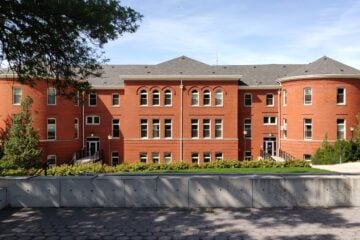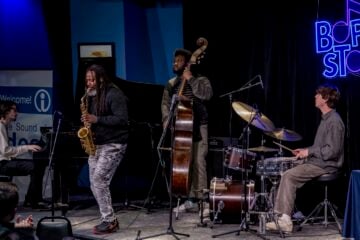St. Louis Public Radio to acquire Illinois station

Purchase of the Quincy frequency WQUB-FM adds to the audience of St. Louis Public Radio. Map shows approximate coverage areas of the St. Louis and Quincy signals by Current. Pink, purplish and blue diameters represent the transmitters' 60, 50 and 40 dBU field strength contours. (Image by Current based on Radio-Locator.com maps.)
UMSL paid $40,000 to buy the station from Quincy University in a deal announced May 18 [2012]. The Quincy signal will rebroadcast St. Louis Public Radio’s lineup of news and talk programming to a potential audience of 120,000 within the 60 dBu contour of the frequency, 90.3 MHz.
The sale is expected to be completed within the next three to four months. WQUB will be renamed Quincy Public Radio.
St. Louis Public Radio approached the Quincy school after hearing that it was considering getting out of broadcasting to redirect more money into academics, said Tim Eby, g.m. of the Missouri station.
WQUB had attracted only meager support from its surrounding community. In 2009, Quincy University President Robert Gervasi told the Quincy City Council that his school was spending about $235,000 annually on operating WQUB — roughly 55 percent of the station’s budget. Only 10 percent of its operating costs came from listener support.
Around that time, the university transferred operations of WQUB to a commercial NBC affiliate in town and cut two staff members. The lone remaining staff member at WQUB will be laid off with the sale to UMSL.
The acquisition will allow St. Louis Public Radio to expand its reach northward toward Hannibal, Mo., where its 90.7 FM signal currently begins to fade out.
St. Louis Public Radio is focused on settling into new headquarters but will consider whether it can add content focused on Quincy after the move is completed, Eby said.
Public Radio Capital represented St. Louis Public Radio in the deal.






